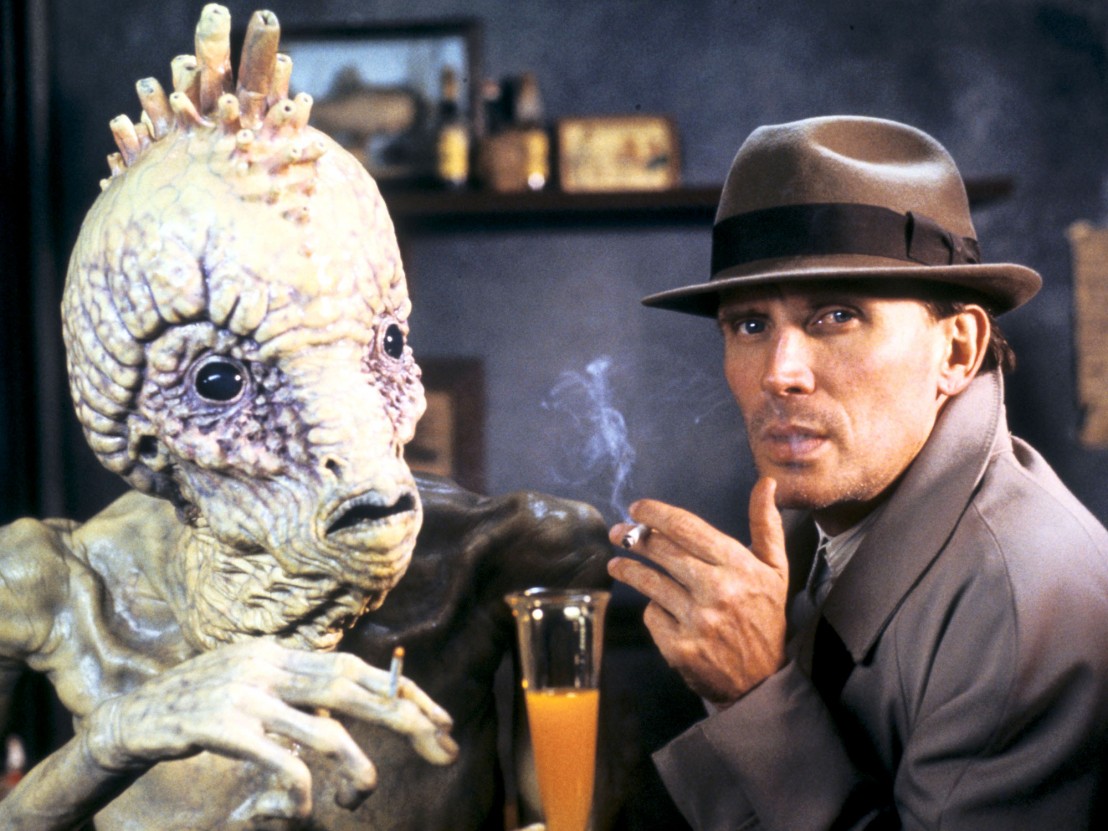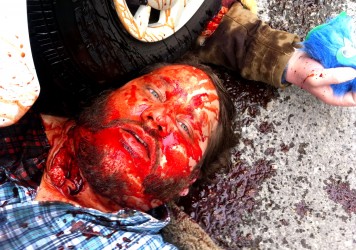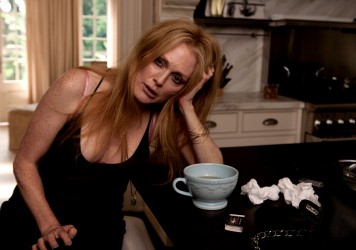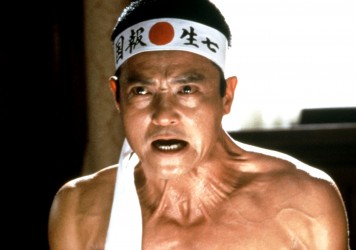
“Nothing is true; everything is permitted.” Welcome to Interzone, the hellish playground of William Burroughs’ ‘Naked Lunch’. Along with Jack Kerouac and Allen Ginsberg, Burroughs was among the central figures of the Beat generation. Over a frenzied decade bridging the 1950s and ’60s they were instrumental in reshaping America’s cultural landscape, tearing up their elders’ starchy doctrine and blazing the trail for the counterculture that followed. As dynamic, brilliant young things they seemingly make for ideal cinematic subjects, but only one film managed to capture something of the essence of its author and the Beat generation at large: David Cronenberg’s Naked Lunch.
A key idea of the Beat generation was to treat the most authentic, uncensored human thoughts and desires as art. In a buttoned-up society, they challenged social norms via their insatiable appetite for sex, drugs and confessional intimacy. ‘Naked Lunch’ was banned for years in the US and even taken to court for its perceived obscenity, while Ginsberg’s ‘Howl’ suffered a similar fate. Both eventually won their respective trials, ultimately helping to liberate American publishing. Liberalisation was, in many ways, what the Beat generation was all about: from strait-jacketed literature, from sexual repression, from lock-step social conformity.
The problem with films about the Beat generation is that so few are genuinely transgressive. But Naked Lunch is a different beast altogether. As is protagonist Bill Lee’s typewriter – it’s an insect that groans with pleasure as he works it, crowing for him to rim its pulsing sphincter with drugs. Bill Lee is really Burroughs, and Cronenberg’s film is about his becoming a writer – his relationship with his typewriter. Rather than attempting to adapt the book in a literal sense, Cronenberg treated Burroughs’ schizoid prose as a secondary source. He gave it structure, but it remains essentially a bizarre work.
In the film, Bill is an exterminator who gets hooked on his hallucinatory bug powder. Soon a large talking beetle is telling him that his wife Joan is a spy and must be eliminated. “It must be done this week, and it must be done real tasty.” So Bill and Joan perform their ‘William Tell act’, just as Burroughs and his wife did one drunken evening in Mexico City in 1951. Bill tries to shoot a glass off her head, kills her, and then things get really twisted. He physically or psychically flees for Interzone, with just one thing in mind: “Exterminate all rational thought.”
If this sounds about as far from On the Road as you could possibly get, that’s because it is – it’s one of the chief reasons why Naked Lunch succeeds where so many others failed. Yesterday’s earnestness is today’s cliche, and the rest of the Beat generation have aged badly. They all plundered their own lives for their writing, but Burroughs lived a different sort of life. He was older, and his story was darker. He really did kill his wife, and Burroughs was, “forced to the appalling conclusion that I would never have become a writer but for Joan’s death.” His guilt drove him deep into the underworld. Where the all-American Kerouac wrote about beatnik frat parties, Burroughs plumbed the lowlife. He spent years exiled in Mexico, Peru, France and Morocco, and it gave him a jaundiced, global perspective. As a result, his vision of America lacks the provincial romanticism of much Beat writing. Instead, it glows with a sickly nostalgia for the sexual dawn of adolescence. Burroughs’ life and work were too unsavoury to be enshrined in popular culture, and so ‘Naked Lunch’ retains its original, edgy twang.
Cronenberg made his film in this spirit. Peter Weller stars as Bill Lee. He’s sharp-featured, a skeleton in a suit with blushed skin and cold blue eyes, slightly slow and otherworldly. He’s mordantly humorous in the face of the horrors he witnesses (“The centipedes are getting downright arrogant.”) The other actors are all anti-Hollywood in their ways too. The detectives are glistening and corpulent. Joan has tired, hungry eyes and a frayed air of desperation. And there’s a frailness, a popped bubble quality, to the muscular Kerouac type; like the morning after, when the sun comes up and casts a shadow of doubt on the night’s mood. Naked Lunch must be one of the weirdest studio films ever made.
But the key to the film’s longevity is the union at its rotten core: Cronenberg and Burroughs. They share a flair for the grotesque, met with perfect nonchalance and bone-dry wit. In Naked Lunch, Cronenberg invites the audience to dine in hell. The intense imagery of his body-horror – nightmares of flesh and metal, lust and infection – finds an equal in Burroughs’ prose. But crucially Cronenberg’s adaptation is a fusion of the two artists’ minds, as if they crossed in The Fly’s telepods. Keeping the title was key, though. As Burroughs put it, “the title means exactly what the words say: naked lunch, a frozen moment when everyone sees what is on the end of every fork.”
Published 15 Jun 2016

Ben Wheatley’s long-time prosthetics supervisor reveals the director’s passion for practical effects.

By Violet Lucca
David Cronenberg indulges in a grotesque inter-family orgy on the golden sidewalks of Hollywood.

By Tom Graham
How Paul Schrader reinterpreted the fascinating story of the revered Japanese author.